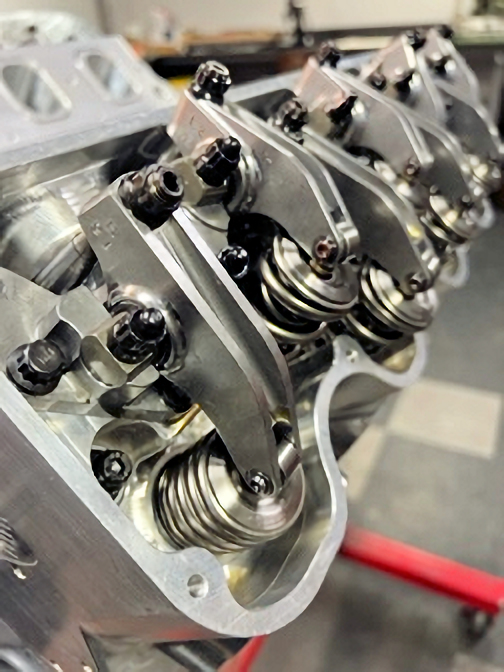
PISTON TO VALVE
Everyone knows the clay method for piston to valve checks. Some people like to use a dial indicator with light “checker” valve springs installed, but that method doesn’t tell you about the actual numbers with the real valve spring installed. So, first find out the tightest piston to valve reading for intake and exhaust with the checker springs and a degree wheel. Usually, 10 degrees BTDC and 10 ATDC. Install the actual valve springs to run, lash the valves. Setup a dial indicator on the spring retainer, and roll engine to the previously found tightest PTV location. Zero the indicator, carefully turn the Allen head lash adjuster (shaft rockers) to open the valve more and watch the indicator reading until the valve lightly stops on the piston. This number is an actual PTV reading. You will be surprised how much clearance you gain over the reading you get with light “checker springs”. Return the indicator to zero and repeat the process or both valves.
Nick Jones
Automotive Machine
Fraser, MI
SEPTEMBER, 2023